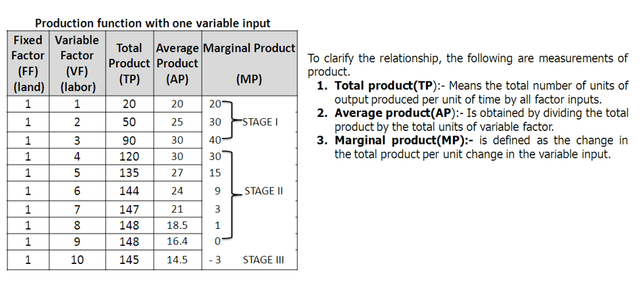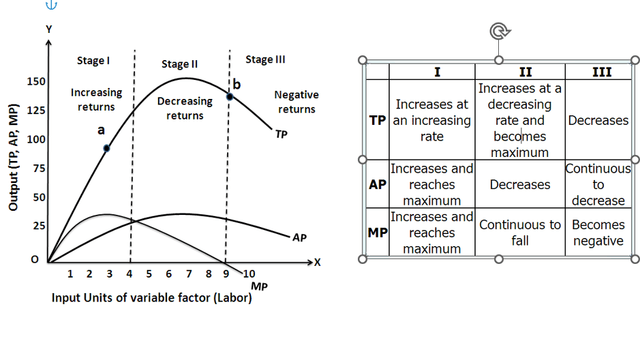Production Function With One Variable Input
The law of variable proportions which was earlier called as “Law of diminishing returns has played a vital role in the modern economics theory. Assume that a firm’s production function consists of fixed quantities of all inputs (land, equipment, etc.) except labour which is a variable input. If you go on adding the variable input, say, labor, the total output in the initial stages will increase at an increasing rate, and after reaching a certain level of output the total output will increase at a declining rate. If variable factor inputs are added further to the fixed factor input, the total output may decline. This law is of universal nature and it proved to be true in agriculture.
Assumptions of the Law:
The law is based upon the following assumptions:
- Only one factor is varied
- The scale of output is unchanged
- The technique of production is unchanged
- All units of factor input varied are homogeneous
Three stages of law:
The behaviour of the Output when the varying quantity of one factor is combined with a fixed quantity of the other can be divided into three distinct stages. The three stages can be better understood by following the table.


From the above graph the law of variable proportions operates in three stages. In the first stage, total product increases at an increasing rate. The marginal product in this stage increases at an increasing rate resulting in a greater increase in total product. The average product also increases. This stage continues up to the point where average product is equal to marginal product. The law of increasing returns is in operation at this stage. The law of diminishing returns starts operating from the second stage onwards. At the second stage total product increases only at a diminishing rate. The average product also declines. The second stage comes to an end where total product becomes maximum and marginal product becomes zero. The marginal product becomes negative in the third stage. So the total product also declines. The average product continues to decline.
We can sum up the above relationship thus when „AP‟ is rising, “MP‟ rises more than “AP; When „AP” is maximum and constant, „MP‟ becomes equal to „AP‟ when „AP‟ starts falling, „MP‟ falls faster than „AP‟.
Thus, the total product, marginal product and average product pass through three phases, viz., increasing diminishing and negative returns stage. The law of variable proportion is nothing but the combination of the law of increasing and demising returns.
